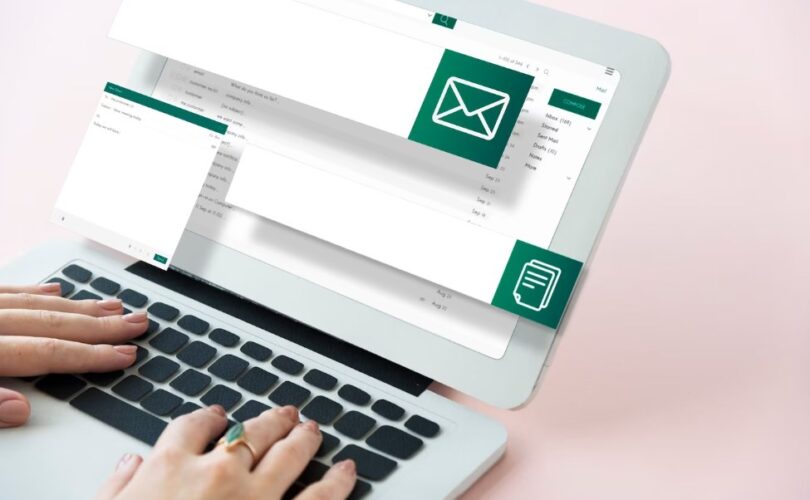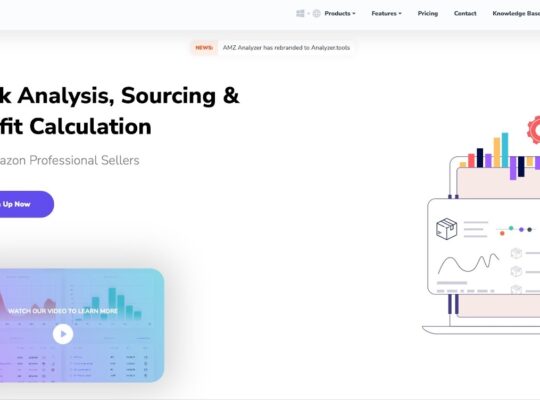In the ever-evolving landscape of digital marketing, identifying the best email communication solutions is crucial for business growth. This article delves into what these tools are and how they can significantly boost your business. In an era where digital communication is paramount, neglecting this aspect could mean missing out on substantial opportunities.
In 2023, the number of email users is exceeding 4 billion (4.371 B), surpassing the reach of social media. Contrary to the belief in some marketing circles that email is becoming obsolete, it remains a cornerstone in the long-term strategy of online business.
The Power of Email Marketing
Email communication, when executed strategically, can fortify a business’s resilience during economic downturns and act as a direct line to revenue generation. It involves gathering potential customers’ email addresses and guiding them through a sales funnel via carefully crafted messages. This funnel gradually warms them up, leading to a purchase decision.
- Post-Sale Engagement: Moreover, after the initial sale, email plays a pivotal role in fostering repeat business. This is often achieved through an automated sequence of emails, designed to engage and encourage further purchases;
- Emotional Connection and Business Impact: For any legitimate business, email remains the most effective way to connect emotionally with interested consumers. Its unmatched capacity to reach customers on a personal level makes it indispensable for both new customer acquisition and retention;
- Cost-Effectiveness Compared to Other Channels: Studies consistently show that email communication is a more cost-effective channel than organic search and social media, offering a higher return on investment.
Understanding EM Tools
With over 2.5 billion people using email globally, set to rise to 2.8 billion, leveraging this channel is more crucial than ever. Email tools are essential for utilizing this expansive platform without the need for extensive resource investment or developing complex systems.
Capabilities of EM Tools:
- Simplification: These tools simplify the process, offering a Software as a Service (SaaS) model that stores all contact details in the cloud;
- Delivery and Segmentation: They facilitate email delivery and enable list segmentation based on various customer preferences;
- Sales Funnel Integration: They make capturing email addresses and integrating them into your sales funnel effortless;
- Analytics: With trackable metrics, these tools provide analytics features, giving you insights into your email campaigns’ performance.
The Significance of EM
Email remains a highly personalized medium to engage prospects and customers. It’s adaptable to customer actions and is an excellent tool for gathering feedback.
Why Email Outperforms Social Media:
- Global Reach: Half the world’s population will use email in the coming years, maintaining its relevancy;
- Efficiency: It is more effective than social media, especially in ROI and long-term relationship building;
- Economic and Sustainable: Email is cost-effective, energy-efficient, and environmentally friendly.
Building Lasting Relationships
Email allows you to develop relationships with various stakeholders, offering a direct and personal communication channel. Friendly, value-driven communication strengthens these bonds.
Transactional Emails and Their Impact
Transactional emails, such as order confirmations and shipping notifications, have significantly higher engagement rates. They are pivotal in driving revenue, with the potential to generate six times more than other types of emails.
The Enduring Dominance of Digital Correspondence in Marketing
Despite the surge in diverse communication methods, particularly with the advent of smartphones, digital correspondence maintains its supremacy as a marketing tool. Year after year, it outperforms traditional methods such as direct mail, television, newspapers, and other online channels. The return on investment is staggering: for every dollar invested in this medium, businesses see an average return of $40.
For companies, especially those with a significant online presence, cultivating and nurturing a list of digital correspondence contacts is not just beneficial; it’s essential for longevity and success in the evolving digital landscape.
Top Digital Correspondence Marketing Solutions
- Privy: A versatile tool for eCommerce platforms, Privy enhances web conversions and targeted messaging. The features include customizable display triggers and a variety of audience targeting options;
- Mailchimp: An all-in-one platform offering auto-responder services, social media ad management, and client relationship management. It also provides website-building tools and supports agencies with multiple client accounts;
- HelloBar: Developed by Neil Patel, this free tool specializes in capturing email addresses. Its paid version offers unlimited popups, subscriber lists, and A/B testing capabilities;
- Klaviyo: Tailored for online businesses, Klaviyo is a growth marketing platform. It facilitates dynamic data integration with Facebook and Instagram, enhancing customer experience and relationship building;
- OptinMonster: A powerful lead generation platform suitable for agencies, bloggers, eCommerce sites, and small businesses. OM excels in growing subscriber lists, enhancing conversions, and tackling cart abandonment issues;
- ConvertFlow: This tool allows the creation of personalized forms, popups, surveys, and landing pages without any coding expertise. CF stands out with its advanced visitor and contact segment targeting, along with site placement targeting.
Emerging Trends in Digital Correspondence Marketing
The digital correspondence marketing landscape is continually evolving, with new trends emerging regularly:
- Personalization and Segmentation: Tailoring messages to individual preferences and behavior is becoming increasingly important;
- Integration with AI and Machine Learning: Leveraging AI for predictive analytics and automated content creation;
- Interactive Content: Incorporating polls, quizzes, and interactive elements in emails for higher engagement;
- Privacy and Data Protection: Adhering to data privacy laws and ensuring secure handling of subscriber information;
- Mobile Optimization: Ensuring content is mobile-friendly, considering the growing use of smartphones for email access.
The Future of Digital Correspondence Marketing
As we look towards the future, digital correspondence marketing is set to undergo further transformation:
- Increased Usage of AI: AI will play a more significant role in automating and personalizing email content;
- Focus on Subscriber Experience: Providing value and relevant content to maintain subscriber engagement;
- Evolving Email Design Trends: Embracing new design trends for more visually appealing and effective emails;
- Greater Integration with Other Marketing Channels: Using email in tandem with social media, content marketing, and other digital strategies for a cohesive marketing approach.
Contrary to the belief that digital correspondence is losing its relevance, it is poised to grow exponentially in the coming decade. As traditional brick-and-mortar businesses increasingly transition online, the investment in digital correspondence platforms is expected to rise, emphasizing the enduring importance of this marketing channel.
Conclusion
The notion that digital correspondence marketing is becoming obsolete couldn’t be further from the truth. As we advance into the next decade, its usage is anticipated to expand, solidifying its position as a cornerstone of digital marketing strategies. This growth is particularly relevant as more traditional businesses adapt to the digital sphere.
The investment in digital correspondence platforms is projected to escalate, underscoring the significance and effectiveness of this enduring marketing channel. Businesses that leverage these tools effectively will likely see substantial returns, reinforcing the power and potential of digital correspondence in the modern marketing arena.






